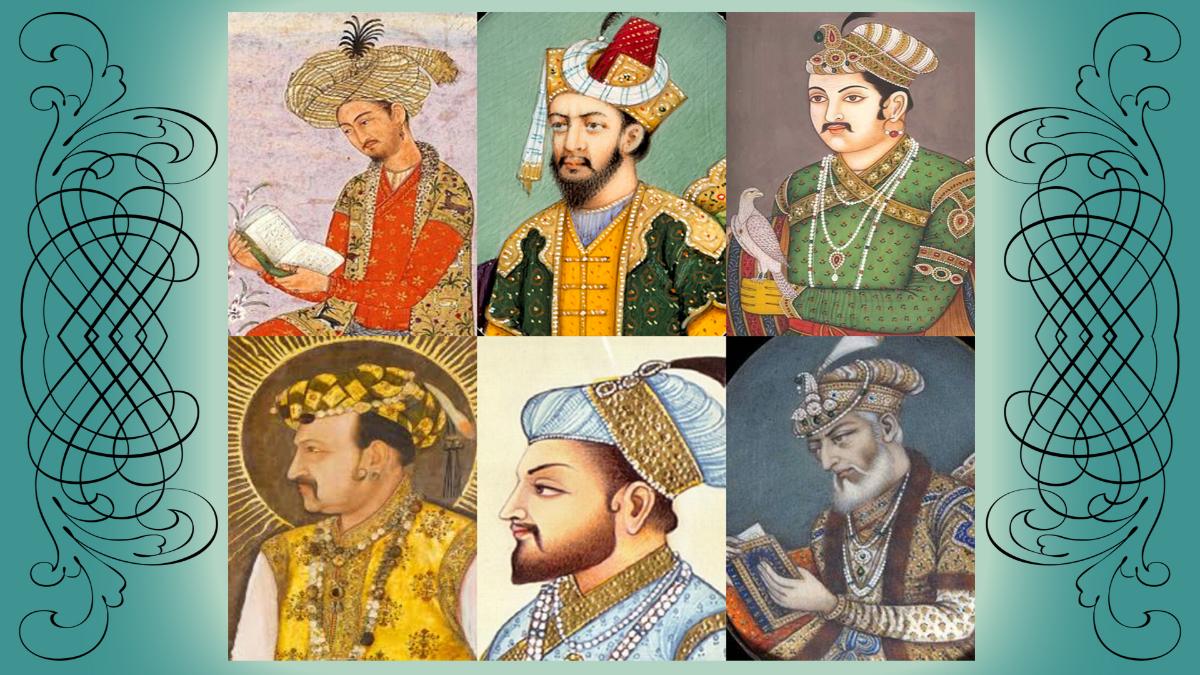
1.Babur (AD 1526-1530),
Which is not true about Babur
He was the descendant of Timur on his father’s side and Changez Khan on his mother’s side. His family belonged to the Chagtai section of the Turkish race and were commonly known as Mughals.
Originally ruled over Ferghana (Afghanistan)
He was invited to attack India by Daulat Khan Lodhi, Subedar of Punjab, Alam Khan Lodhi, uncle of Ibrahim Lodhi and Rana Sanga.
In the First Battle of Panipat in AD 1526, he finally defeated Daulat Khan Lodhi.
Ans - d)
2.Which of the following statements is incorrect.
Babur was the first ruler to entitle himself ‘Badshah’, as well as Sultan.
He wrote Tuzuk-i-Babari or Babarnama in Turkish. It was translated into Persian by Abdul Rahim Khan-i-Khanan.
His victory led to rapid popularisation of gunpowder and artillery in India.
After the Kushanas, he was the first to have brought Kabul and Kandahar into the Indian empire.
He died in AD 1530 and was buried at Aram Bagh in Agra. Later his body was taken to Aram Bagh at Kabul.
He won first battle of Panipat in 1527 AD
Ans - e)
3.Humayun, which is incorrect about him.
(AD 1530 – 40 and AD 1555 - 56)
Humayan was great ruler who conquered west and south India
b) Humayun was again defeated by Sher Shah and had to flee.
c) He spent nearly 15 years in exile. He wandered in Sindh during the reign of Shah Hussain Arghuna, and then reached the Iranian Court.
d) In AD 1556, he fell from the stairs of the library (Sher Mandal, Delhi) and died.
Ans - a)
4.Akbar (AD 1556-1605) , which of the following is incorrect
Bairam Khan represented him in the Second Battle of Panipat in AD 1556 against Muhammad Adil Shah Sur’s Wazir, Hemu. Akabr defeated Hemu and reoccupied Delhi and Agra.
He also ended the interference from the Petticoat Government, (1560-62) represented by Maham Anga and Adham Khan’s Junta.
He won Gujarat in 1572. In order to commemorate his victory in Gujarat, Akbar built Buland Darwaja at Fathepur Sikri.
At the time of Akbar’s death in AD 1605, his empire included Kashmir, Sindh, Kandahar and extended as far as the Godavari in the Deccan.
He was buried at Sikandra near Agra.
He was the last great king of India.
Ans - f)
JAHANGIR (AD 1605-1627),
5.Which of the following statement is incorrect :
Akbar’s eldest son, Prince Salim assumed the title of Nuruddin Muhammad Jahangir and ascended the throne.
His greatest failure was the loss of Kandahar to Persia in 1622.
Jahangir’s wife Nurjahan (daughter of Itmad-daulah) exercised tremendous influence over the state affairs. She was made the official Badshah Begum.
Nurjahan’s actual name was Meher ul -Nisha. She was the widow of Sher Afghani. Jahangir married her and conferred the title ‘Nurjahan to her’.
Captain Hawkins (1608-11) and Sir Thomas Roe (1615-1616) visited Jahangir’s court.
Production of Tobacco (brought by the Portuguese) started in his reign.
He was buried at Lahore.
He wrote his autobiography, Tuzuk – i – Jahangiri in Arabic.
Ans - h)
SHAHJAHAN (1628-1658)
6.Which of the following statement is incorrect :
Born to Jodhabhai or Jagat Gosain in Lahore in 1592. His real name was Khurram. He was the youngest prince to be appointed as the Governor of Deccan, at the age of 15.
In 1612, he got married to Arjamand Bano Begum (known as Mumtaz Mahal), daughter of Asaf Khan.
He was imprisoned by his son Aurangzeb in Agra fort and died in captivity in AD 1658.
He hated music and art.
He was buried at Taj Mahal (Agra) besides his loving wife.
Ans - d)
AURANGZEB (AD 1658-1707)
7.Which of the following statement is incorrect :
He was the third son of Shahjahan born in Ujjain. Aurangzeb made the victory of Deccan in 1636.
He took the title of ‘Alamgir’ upon his coronation in 1659. He was called a Zinda pir or the ‘living saint’.
In 1679, he reimposed Jaziya.
He made better relations with rajputs and married Hindu princess
Aurangzeb died in AD 1707 and was buried at Khuldabad (Daulatabad) near Aurangabad.
He built ‘Bibi ka Maqbara’, similar to Taj Mahal in Aurangabad.
Ans - d)
